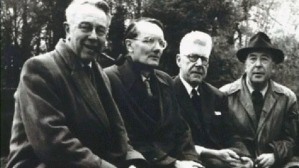Some books we read in 2019
At our first literary coffee klatsch of 2020 we listed some of the books we had read towards the end of 2019, and there was quite a variety. I mentioned Die Derde Oorlog teen Mapoch, which Janneke Weidema had mentioned at an earlier meeting, and that had got me interested. She said she had liked the story of Solly Mahlangu using the government’s rand-for-rand scheme to provide better schools in KwaNdebele.
I mentioned some of the other books I had been reading recently, most of which were covered in reviews on my blogs — see here:
- Missiological musings inspired by Die Derde Oorlog teen Mapoch | Khanya
- Another man’s war | Khanya
- From Beats to hippies: the Electric Kool-Aid Acid Test | Khanya
- Be born in us today | Notes from underground
The last of these, Be born in us today by Anglican bishop John Davies was designed to be used by parish study groups on the meaning of Christmas, and I had been reading it as a Christmas book. Janneke said she had been reading What Quakers believe, but after reading it she still wasn’t sure that she knew any more about what Quakers believe. She said they might be using it for a study group in their Quaker meeting.

Johnnie Aukamp mentioned and recommended The Complete Maus by Art Spiegelman, which deals with Nazi tyranny. He also mentioned a book called The Cheese and the Worms, but I forgot to note the author, so I am not sure if it was this one or this one. He had also read The Door into Summer by Robert Heinlein.
On of the first books I have started reading this year is one by Johnnie Aukamp himself, though I’m not sure whether I should mention the title, as he wrote it under a pseudonym. But one of the interesting features of this book is that it mentioned a fictitious ancient manuscript which was an important key to the story.
The fictitious ancient document is quite a common trope in fantasy literature, and one of the ones that springs to mind for me is the De Angelis of Marcellus Victorinus of Bologna, published in the year 1514. at Paris, and dedicated to Leo X. Someone has tagged it in the linked catalogue entry as “practical joke”.
 The De Angelis is mentioned in The Place of the Lion by Charles Williams, where it appears to be a commentary on a commentary on The Celestial Hierarchy by Dionysius of the Areopagite. In it, Williams seems to throw considerable light on the role of eagles in the writings of his fellow-Inkling J.R.R. Tolkien, though it was actually first published in 1931, before The Hobbit, so perhaps Tolkien was influenced by Williams in his use of eagles.
The De Angelis is mentioned in The Place of the Lion by Charles Williams, where it appears to be a commentary on a commentary on The Celestial Hierarchy by Dionysius of the Areopagite. In it, Williams seems to throw considerable light on the role of eagles in the writings of his fellow-Inkling J.R.R. Tolkien, though it was actually first published in 1931, before The Hobbit, so perhaps Tolkien was influenced by Williams in his use of eagles.
Val recalled that our son Simon, like one of the characters in The Place of the Lion, used to work in a bookshop, and one day a man came into the shop and asked for a copy of a book by Professor Robert Langdon. It may have been The Symbology of Secret Sects, or possibly The Art of the Illuminati, which was cited in The da Vinci code by Dan Brown. But whatever the title was, Simon pointed out that it was a fictitious book. The customer got quite angry, and pointed at the mention of it in The da Vinci code. Simon pointed out that The da Vinci code was itself a work of fiction, and just because a book was mentioned there did not mean that the book actually existed.
Something similar happened a few years earlier: Professor Irving Hexham, of the Department of Religious Studies at the University of Calgary said something similar had happened in connection with H.P. Lovecraft’s fictitious work, the Necronomicon, and some had even built a new religious movement on it. For more on that see C.S. Lewis, H.P. Lovecraft and me | Khanya.
Val and I had both read and enjoyed Doomsday Book by Connie Willis, a science fiction book about a time-travelling history student — more in my review at Time travelling historian gets stuck in the past | Khanya.
We also discussed reading in general, and changes in language and the meaning of words. Most of us had enjoyed books by authors like Enid Blyton as children, and though she was not a brilliant author and her writing had many flaws, her books instilled in us a love of reading, and I recalled a lot of things I had learnt from them that I had not realised I had learnt, like some commonly used idiomatic phrases like “the coast is clear”. For a fuller list of such idioms see The Mountain of Adventure (more Enid Blyton) | Notes from underground.














